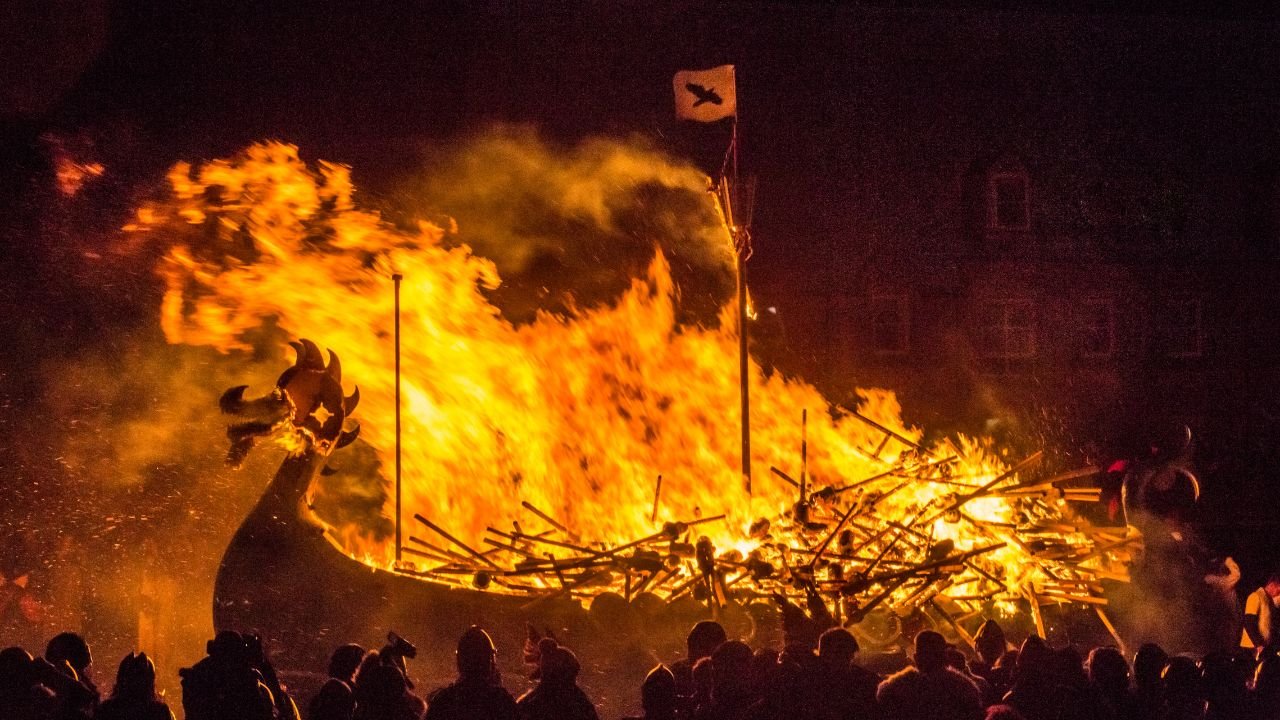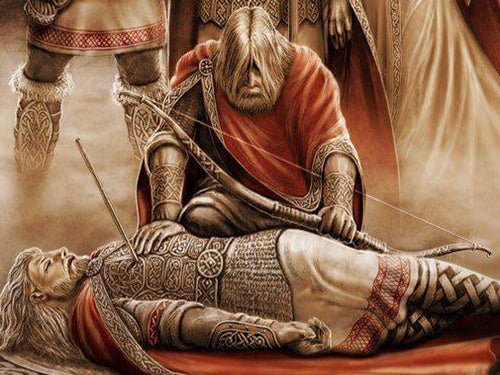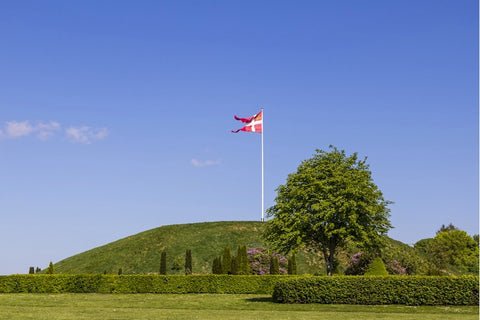Viking Funerals: Beyond the Burning Ship
Photo a blazing ship set adrift into the dark North Sea, bring the body of some noble and excellent warlord. ‘Viking funerals’ like these may be among the first things that you envision when you think about Medieval Norse culture. Such an effective mental image does seem befitting of the powerful Viking legacy. Nevertheless, as stirring a picture as it may be (and as great as it may search a movie theater screen), the ‘Viking Funeral service’ was not the flaming longboat affair that’s normally illustrated in storybooks.
Unlike what Hollywood might have us believe, we can’t actually discuss ‘Viking Funerals’ as a monolith. Practices varied throughout centuries and regions and in between bad and abundant members of society. By collecting individual threads of evidence from historical sites, sagas and travellers’ accounts, historians have been able to develop a tapestry of what Norse funeral services probably looked like, and it’s not exactly what you might anticipate.

< img src=" https://everythingviking.com/wp-content/uploads/2023/04/viking-archeology-viking-funerals-beyond-the-burning-ship.jpg" alt=" Viking Longship- Ablaze -The Viking Dragon Blog site "width =" 600 "> The Death of Baldr Before we discuss what Viking Funerals entailed, let’s get the big blazing mistaken belief out of the method. No, as remarkable as they are to view in movies, Viking Funerals did not include a longship being set on fire and cast out into the ocean like a floating crematorium. What we’re describing here is the funeral of Baldr, the boy of Odin and Frigg. After being murdered by Loki with a dart made from a mistletoe branch, Baldr’s body was carried to the shore on Odin’s horse, where it was put to rest on a magnificent longship called Hringhorni. His spouse, Nanna, who died of grief right there on the area, was laid beside him on a funeral pyre on the decks of the ship. Odin offered his boy a gold armband, whispered a couple of words into his ear, and the flaming ship was sent to sea.< img src=" https://everythingviking.com/wp-content/uploads/2023/04/viking-archeology-viking-funerals-beyond-the-burning-ship-1.jpg" alt=" Baldr's Funeral service- Pushing the Boat out to Sea -The Viking Dragon Blog" width =" 600" > This is undoubtedly an extremely powerful story, however it explains the final rites of a God, not a mortal male. Even the funerals of noblemen in the Viking Age would not have consisted of the drama of

a flaming longship drifting away from
a pack of mourners on the beach. Popular in stories today, the stereotyped’ Viking Funeral service’ is a work of fiction.< img src=" https://everythingviking.com/wp-content/uploads/2023/04/viking-archeology-viking-funerals-beyond-the-burning-ship-2.jpg" alt= "The Death of Baldr- The Viking Dragon Blog site" width =" 600 "> Cremations and burials Vikings said goodbye to the body of a loved-one in two main ways: burial and cremation. Cremation was favoured by early Vikings, who believed that the fire’s smoke would bring the deceased’s spirit to the afterlife. Once cremated, the remains were usually buried in an urn. The existence of a funeral pyre may remind you of the Hollywood Viking Funeral service, in reality, such affairs were strictly land-based. As the centuries wore on, cremation was gradually changed with burial as the primary funerary approach. Graves varied greatly to show the value of the deceased within the neighborhood, varying from shallow tombs for the lowest-class women and kids to immense burial mounds for the wealthiest and most effective Vikings. The largest known burial mound is the North Mound in Jelling, Denmark, which was built to be the last resting location of King Gorm the Old. Measuring over 10 metres high, it would have taken numerous males several days to develop, showing the significance of

the king and the reverence booked
for him even after death. The late king’s child, Harald Bluetooth, who had the mound developed, also had a stake in its remarkable stature. Any new ruler would want to emphasise his father’s power now that said power had actually been passed on to him.< img src =" https://everythingviking.com/wp-content/uploads/2023/04/viking-archeology-viking-funerals-beyond-the-burning-ship-3.jpg" alt =" Jelling Burial Mound -The Viking Dragon Blog site "width =" 600" > Of Burials and boats Though Hollywood’s burning longship funeral services might be a work of fiction, there is a kernel of reality in what we see on the silver screen. Boats have actually been discovered at Viking funeral service websites all over Scandinavia, irrespective of whether the deceased was cremated or buried. A respected member of the community throughout what has been called the’ burning age’ may have been cremated on a funeral pyre on the decks of a ship, which was then buried below a burial mound. When burials became more popular, the body was often laid to rest upon the decks, before the entire was covered by earth and soil.
Many of our best-preserved examples of longships have actually been those found at burial websites. The Oseberg Ship, an enormous vessel with intricate carvings and space for 30 oarsmen, was discovered as the final resting location of 2 Viking women. We don’t know who they were, we can just guess that they were incredibly important religious or political leaders to call for such a lavish burial place. Even when the body was not buried with a genuine longship, the image of a boat might be conjured up around their burial mound utilizing what has been called’ ship settings.’ This practice included creating the outline of a ship around the serious site utilizing stones or stones. The biggest example of a ship setting
is, once again, at
Jelling. Gorm the Old’s tomb was surrounded by pillars in the shape of a massive longship, measuring 360 metres from nose to tail.< img src =" https://everythingviking.com/wp-content/uploads/2023/04/viking-archeology-viking-funerals-beyond-the-burning-ship-4.jpg" alt=" Viking Warrior Costume at The Viking Dragon- Viking Dragon Blog Site" > Tomb Product The vastness of their burial ship isn’t the only reason we understand the Oseberg females were wealthy. They were likewise put to rest with a gold mine of riches, including everything from fine ornaments and clothes, to livestock, to cruising devices. Grave goods were a staple part of a Viking burial. Middle ages Scandinavian were sent off to the afterlife with everything that they may need on their journey, be that practical equipment or great clothes. Guy were typically buried with weapons, tools and even video gaming sets, whereas a female’s loot was most likely to include clothing, jewellery and fabrics. Slaves and animals may also have been consisted of.

The most popular account
of a Viking funeralFuneral service found in the diary journal an Islamic traveller named Called ibn Fadlan, tells informs a Viking chieftain being cremated on the decks of a longship surrounded by food, drinkBeverage animals, accessoriesDevices weapons and even a female slave servant serve him in the afterlife.< img src= "https://everythingviking.com/wp-content/uploads/2023/04/viking-archeology-viking-funerals-beyond-the-burning-ship.png" alt=" Viking Precious Jewelry -Viking Burial Goods -The Viking Dragon Blog Site" > Christian Burials Though King Gorm was initially entombed beneath his enormous burial mound, this would not be his last resting location. When his son transformed to Christianity, Gorm was exhumed and reburied beneath Jelling church and a magnificent rune stone with an engraving of Jesus was put up in his honour. There’s evidence that the intricate Viking funeral service ended up being easier as Christianity crept across Scandinavia. As the brand-new religion took hold, funeral services integrated both Christian and norse practices. Early Christian funeral services still in some cases featured severe items,
though these were
generally less and more practical than the riches of times
passed. Laying the deceased to rest on the decks of a ship likewise fell out of fashion and burial strongly took hold over cremation as the funerary approach of choice. Nevertheless, it was around this time that rune stones began popping up all over Scandinavia to honour the dead and tell of their accomplishments, comparable to how we might use a gravestone today.